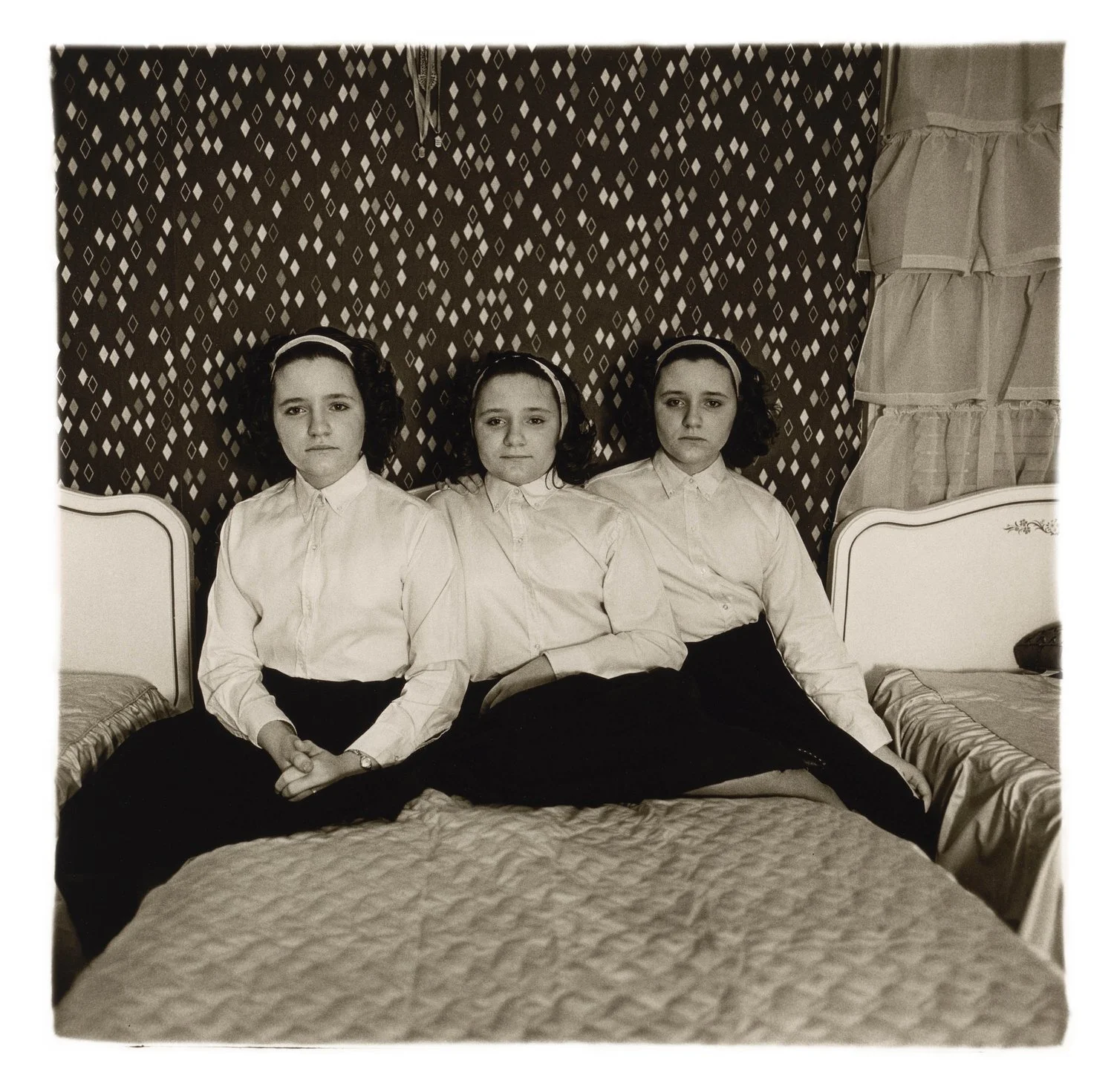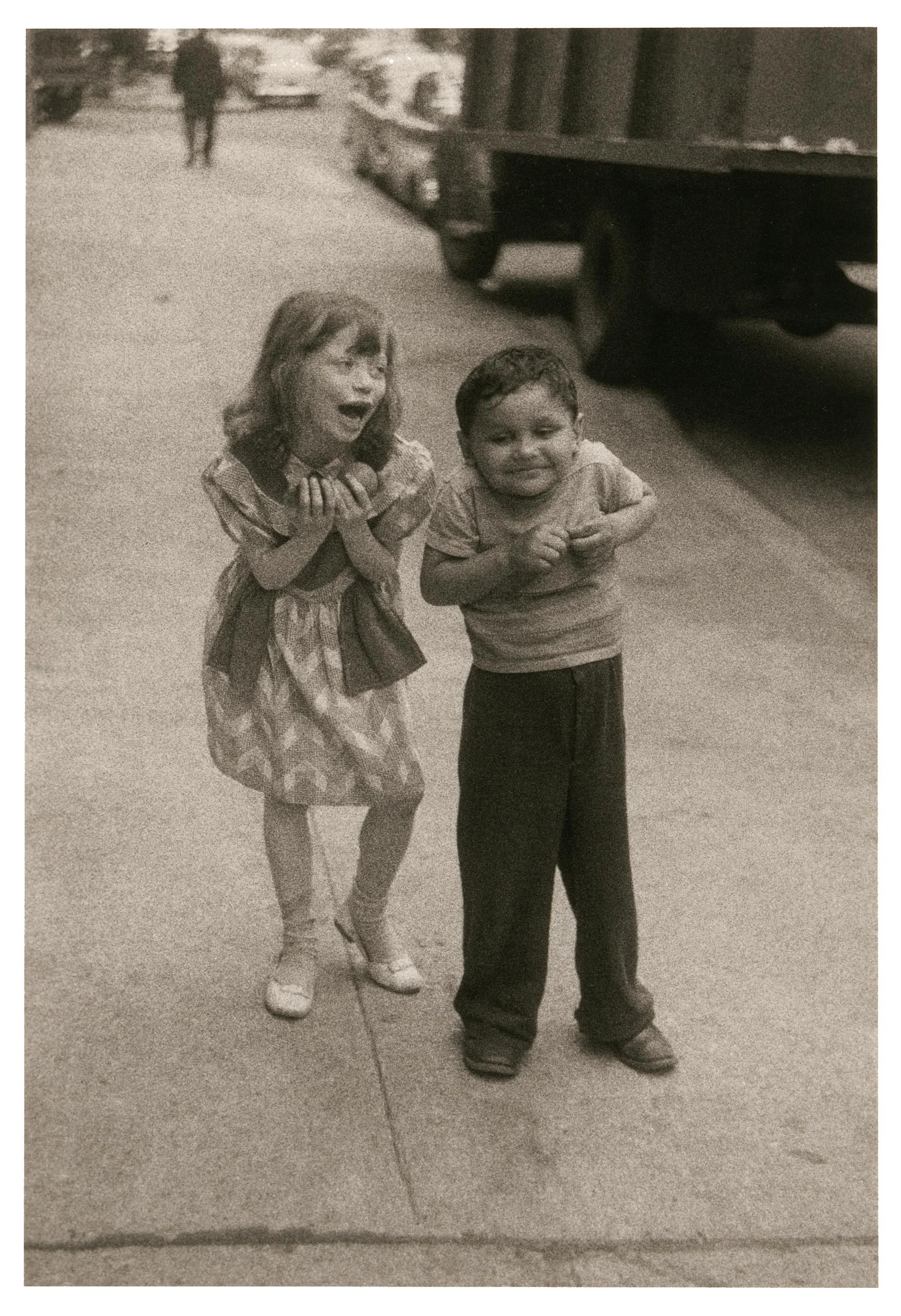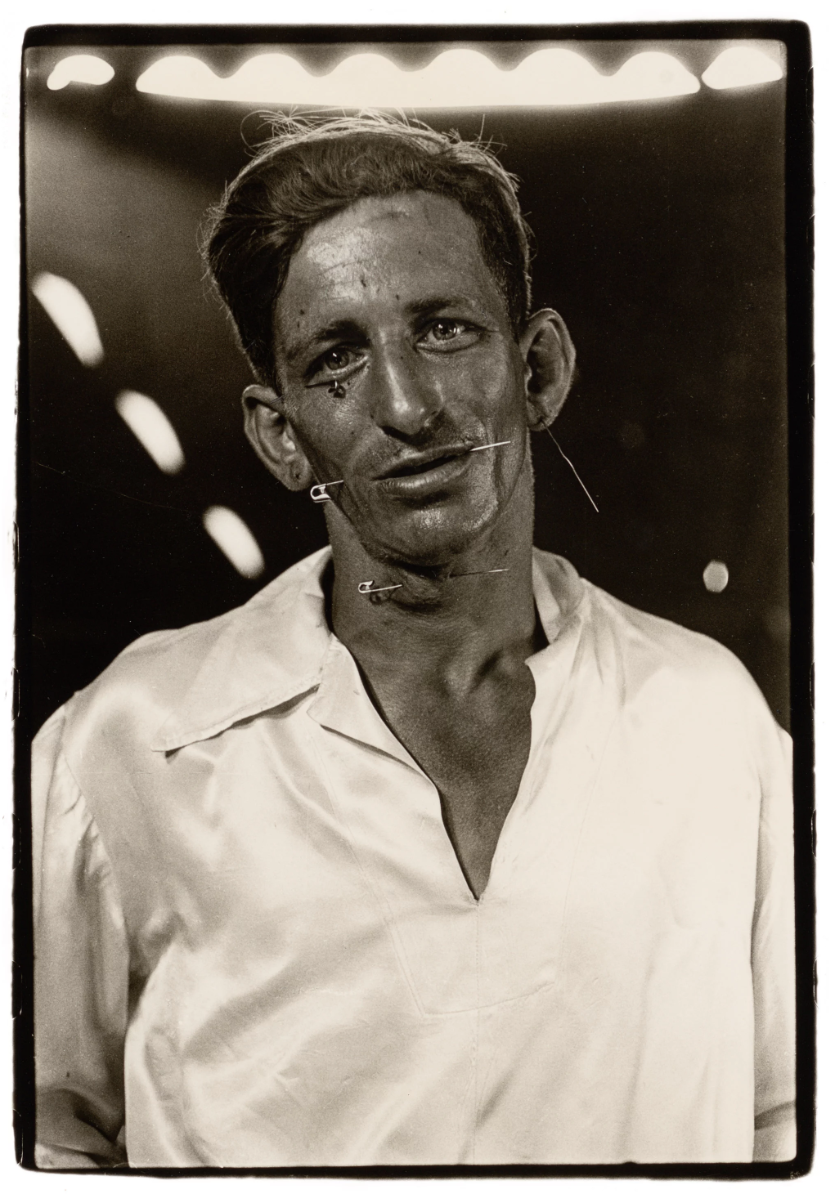Exhibition Review: Diane Arbus Retrospective
Triplets in their bedroom, N.J. 1963
Gelatin silver print
Image: 15 x 14 3/4 inches (38.1 x 37.5 cm)
Sheet: 20 x 16 inches (50.8 x 40.6 cm)
Framed: 24 3/4 x 20 3/4 inches (62.9 x 52.7 cm)
David Zwirner Gallery ©
Written by Gabrielle Keung
The Cataclysm exhibition at David Zwirner Gallery revisits Diane Arbus’s work that was on display in The Museum of Modern Art (MOMA) in New York fifty years ago. The crowds Arbus drew on opening night is a testament to the impact she still has on contemporary photographers, artists and viewers. Fifty years later, her work still feels audacious – and at times repugnant. Arbus has said that, while her subjects are more bizarre and odd than beautiful, they’re “undeniably something.”
Child teasing another, N.Y.C. 1960
Gelatin silver print
Image: 8 3/4 x 6 inches (22.2 x 15.2 cm)
Sheet: 14 x 11 inches (35.6 x 27.9 cm)
Framed: 16 x 12 3/4 inches (40.6 x 32.4 cm)
David Zwirner Gallery ©
Arbus’s work is provocative and confrontational, which explains the controversial response amongst people well-versed in photography. Her work implicates the viewer every time the subject looks back at them, ostensibly as intensely interested in the viewer as they are in the subject. This elicits a great deal of discomfort and curiosity in the viewer and raises a fundamental question: why is it difficult for them to look away?
The Human Pincushion, Louis Ciervo, in his silk shirt, Hagerstown, Md. 1961
Gelatin silver print
Image: 11 1/4 x 8 inches (28.6 x 20.3 cm)
Sheet: 14 x 11 inches (35.6 x 27.9 cm)
Framed: 17 3/4 x 14 3/4 inches (45.1 x 35.6 cm)
Printed by Diane Arbus 1966-1967
David Zwirner Gallery ©
Searing honesty sets her photography apart from others’ work and makes it incredibly unique. Her subjects are entirely themselves – uninhibited, unsparing and whole – despite their obvious deviation from the ideals of bodily wholeness – whether they’re trans, people with Down syndrome or dwarves. The picture of a topless Mexican dwarf with a bowl hat on, resting his arm on the bedframe and gazing softly into the camera, is lyrical and poetic. Despite being fully aware that he is posing for a photograph, his body language denotes otherwise. His limbs are not tense, and his saggy stomach telling viewers that he does not suck it in with the intention to flatten it for a picture, and his smile is tender. Arbus’s work forces viewers to turn their attention to subjects that are inconspicuous to recognize their value.
Woman in a rose hat, N.Y.C. 1966
Gelatin silver print
Image: 10 3/4 x 10 1/4 inches (27.3 x 26 cm)
Sheet: 14 x 11 inches (35.6 x 27.9 cm)
Framed: 20 3/4 x 16 3/4 inches (52.7 x 42.5cm)
Printed by Diane Arbus 1966-1967
David Zwirner Gallery ©
Arbus doesn’t ask viewers to look at her subjects with compassion – but rather to contend with their humanity. For instance, the image of a man with curlers in his hair, cigarette between his fingers, is so private that looking at it may feel sacrilegious; such intimacy is not normally publicized. Arbus invested in subjects who would never ask to be subjects because they were too far from the ideals of symmetry and proportion. Instead, she asks viewers to reconsider what merits a photographer’s attention, and by extension, the attention of the viewer. Arbus’s subjects are arresting precisely because they are so ordinary – yet their presence is so palpable that makes them something else.
he Junior Interstate Ballroom Dance Champions, Yonkers, N.Y. 1963
Gelatin silver print
Image: 15 x 14 1/2 inches (38.1 x 36.8 cm)
Sheet: 20 x 16 inches (50.8 x 40.6 cm)
Framed: 24 3/4 x 22 3/4 inches (62.9 x 57.8 cm)
Edition of 75
Printed by Neil Selkirk
David Zwirner Gallery ©
The dialogue between the viewer and the subjects – the person behind and in front of the camera – is unending. Viewers lock eyes with the subject and ask a million questions – what are they thinking? Why are they dressed this way? Where are they? Our visceral response to Arbus’s work explains its longevity and the continued controversy surrounding it.












